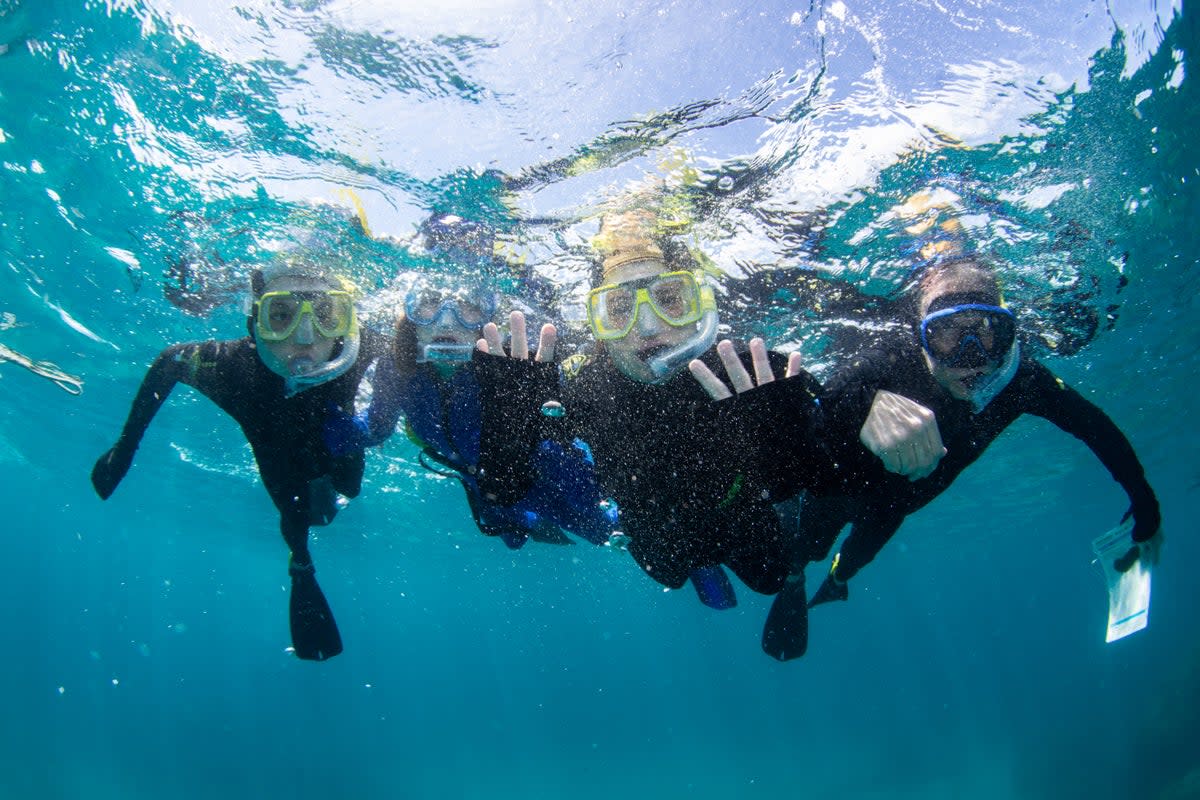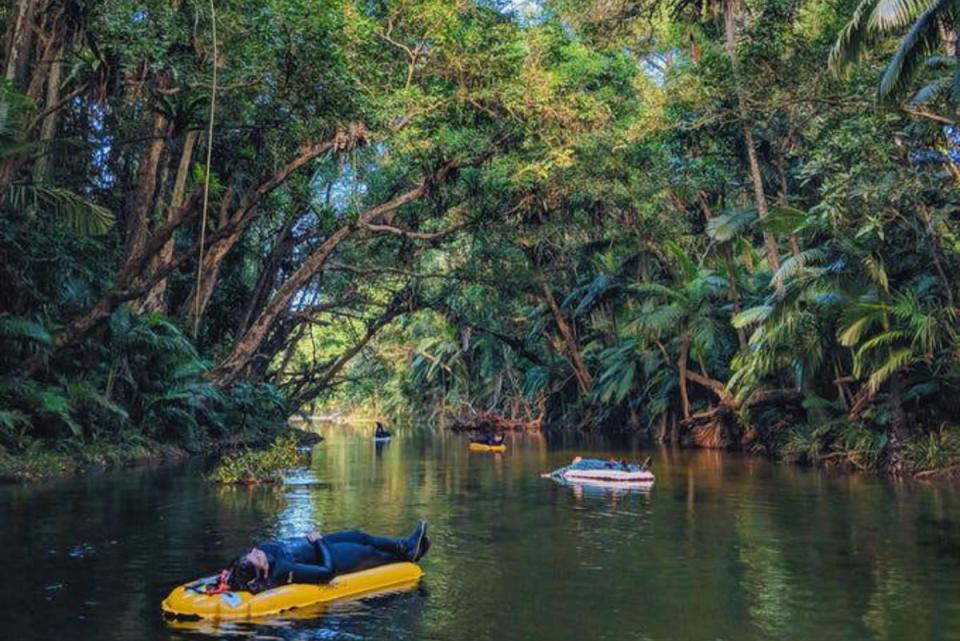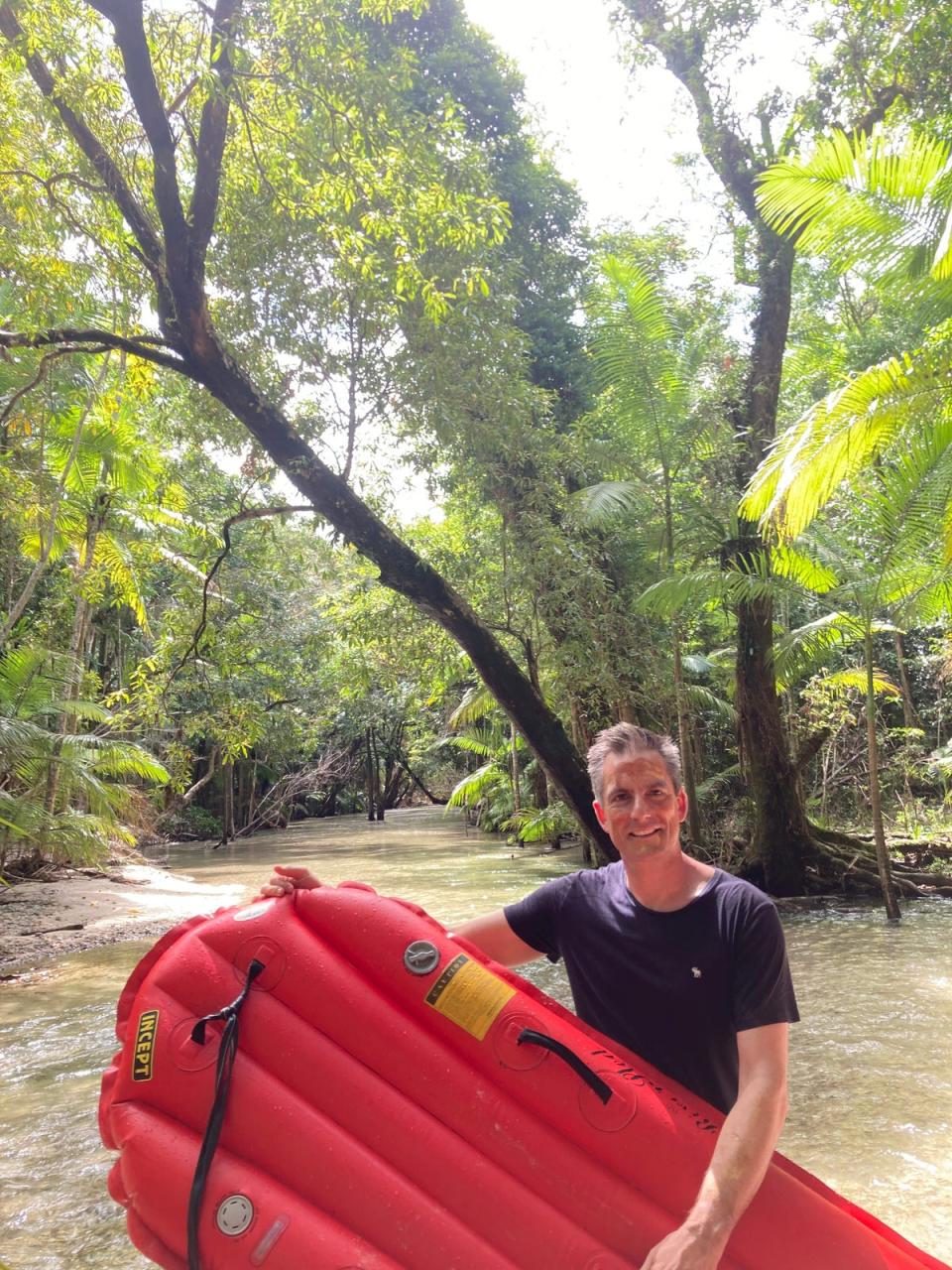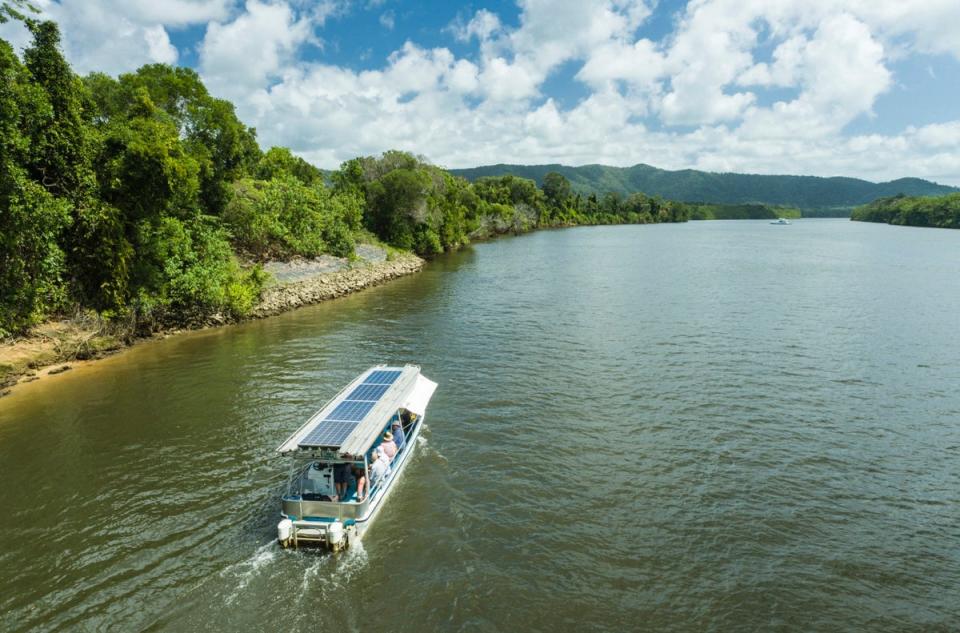Visiting David Attenborough’s ‘favourite place’ – why you should explore the reefs and rainforests of North Queensland

In Australia’s Cairns airport, David Attenborough looks down on us as we collect our bags. His familiar smiling face is on a huge billboard, with some of his equally huge quotes. They adore Sir David in this part of the world and it’s not hard to see why. He has described tropical North Queensland as his favourite place in the world.
“It has, for a naturalist, everything” he says. “An amazing rainforest, which is quite unlike any other rainforest in the world.” Not only that, he adds: “Down on the coast it has the Great Barrier Reef.”
I conclude that if it’s good enough for one of the world’s most travelled men, then it is more than good enough for my wife, two kids and me.
We are desperate to explore both reef and rainforest, two Unesco World Heritage sites side by side, but it is on the river where our Attenborough adventure begins.
“Guys, don’t ever go in the water,” says the guide Marc as he takes us up the Daintree River in his solar-powered boat. We are on the hunt for Scarface, notorious king of the crocs, five metres long, with half a dozen girlfriends and thoroughly cold-blooded (literally).

Suddenly there he is, his giant body slipping through the water with a slow flick of the tail, no ripples, no noise, just menacing eyes. “He’s fine with us being here,” says Marc, “as long as we stay out of the water.”
With those words ringing in our ears, the very next day we do the unthinkable. We go in the water.
North of Cairns, in the heart of Daintree National Park, is Mossman Gorge. Its beauty is as hard to comprehend as its ancient origins – up to 180 million years old.
Read more: Why you should book a holiday to Ningaloo, Australia’s ‘other reef’
Under the rainforest canopy, electric blue Ulysses butterflies flit past and camouflaged Boyd’s forest dragon reptiles (which are only found here) cling to the bark of ancient trees that strain, stretch and compete for the sunlight.
We are quite simply in awe as we run our fingers through soft moss and gaze up at strangler figs wrapped around red tulip oaks. The vegetation is a juicy hundred shades of green after a particularly wet period. There are 3,000 species of flora here, 700 of them unique to the Daintree, and thousands of birds, mammals and reptiles.
But no crocs; the water in this shady paradise is too cold.

On inflatable rafts – think industrial-strength lilo – we drift downstream, through dappled sunlight, a lazy river ride like no other. We can’t stop grinning, enveloped by this natural wonder, both exhilarating and supremely relaxing in equal measure.
Daintree Rainforest stretches 60 miles before giving way to golden beaches and the Great Barrier Reef. Visible from space, it’s 1,400 miles long and made up of 2,900 individual reefs and 900 islands.
In keeping with our naturalist theme, we sign up to a “be a marine biologist for the day” programme with Passions of Paradise, the only locally owned company offering tours of the reef.
We are joined by our guide, the infectiously enthusiastic and knowledgeable Corinda de Mooij. As we head out to sea on an impressive sailing catamaran with around 70 other tourists, she explains how the crew assist with the Australian government’s Eye on the Reef programme: “Tourist agencies work with scientists to gather data. The more people who visit the reef and collect data, the more information can be gathered to get a better picture of the reef’s condition.”
Read more: How travellers are seeking out Australia’s hot springs at the Mornington Peninsula
Snorkelling among the vibrant coral and fish normally seen in an aquarium is truly mesmerising. Nothing prepares you for the colour, variety and otherworldliness of it all. With our waterproof pens and clipboards, we note rainbow fish and clownfish, clams and sea cucumbers, parrot fish and even white-tipped sharks. Far from a gimmick, all the information collected daily from our boat, and many others, is added into a huge database to, quite literally, get a deeper understanding of the health of this natural wonder facing climate change stress.
As well as his enthusiasm for North Queensland, David Attenborough also once said “home” is his other favourite spot on the globe. And when we get back to our home and reflect on our trip, we decide, like him, we share exactly the same thoughts on the two best locations in the world to spend our time.

What to do
Walk through the rainforest then drift down the Mossman River after a traditional Kuku Yalanji smoking ceremony where you’ll be cleansed of bad spirits. From A$270 (£140) per adult
See the Daintree from the air on the Skyrail. The cable car gives you an amazing view, especially if you choose one with a glass bottom. Visit the “hippy” mountain town of Kuranda then take the Scenic Railway back down. Prices start from A$68 (£35).
Snorkel, dive and sail around the reef with multi-award-winning Passions of Paradise. Prices start at A$260 (£170) and include a fantastic lunch, refreshments and equipment.
Where to stay
Mantra PortSea resort in Port Douglas is great value. It’s just moments from the beach and a 15-minute stroll to the town centre.
For a central location in Cairns, we think Crystalbrook Bailey would win an approving nod from Sir David with wooden key cards, waste-free bathrooms and an EarthCheck silver-level certification.
Sir David also said North Queensland has “terrific wine and food”, and he’s not wrong. After driving through whispering sugarcane fields, we had a stunning lunch in the open-air restaurant at luxury bolthole Silky Oaks Lodge overlooking the Mossman River.
How to get there
There are daily flights to Cairns from Sydney, Brisbane and Melbourne. Or if you are feeling adventurous, take the Bruce Highway coast road from Brisbane to Cairns, covering 1,000 miles. A number or airlines fly from the UK to Australia, including British Airways, Singapore Airlines, Emirates, Delta Air Lines, Virgin Atlantic and American Airlines.
Read more: Australia travel guide: Everything you need to know before you go

 Yahoo News
Yahoo News 